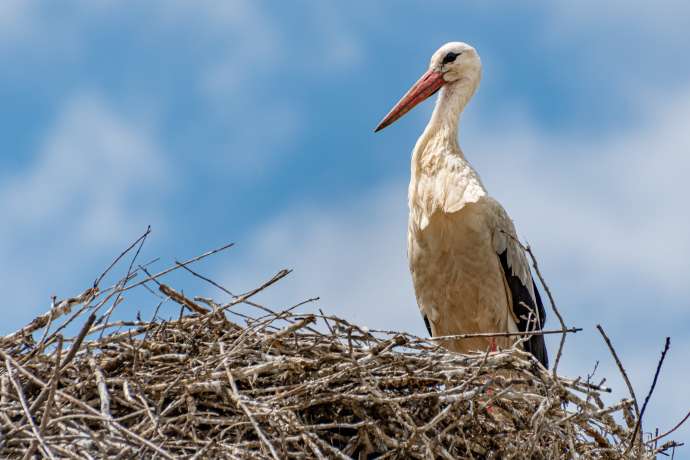STA, 27 July 2021 - While the number of white stork pairs has been constant or increasing throughout Slovenia in recent years, it has been steadily decreasing in the north-eastern region of Prekmurje, which is the typical stork habitat in Slovenia.
Around 200 pairs nested in Slovenia in 1999, while last year there were 259, said Damijan Denac, the director of the Bird Watching and Bird Study Society of Slovenia.
The society, which has been monitoring the number of white stork pairs in the country since 1999, notes that this species has started to colonise areas where it had not traditionally nested before.
Denac explained that the stork population has increased in the area between Grosuplje and Novo Mesto, where no storks nested in 1999, while there are about 20 pairs today, as well as in Bela Krajina, the Ljubljana Marshes and the plains around Krško.
Storks also nest in other locations. "It is important to note, however, that the white stork is slowly but steadily disappearing from its traditional breeding area, Prekmurje," Denac said.
He believes that the reasons lie in environmental changes, especially food sources. Stork feed on insects, small mammals and amphibians, which are most often found in meadows. However, as intensive farming in Prekmurje has left very few meadows, there is not enough food left for storks.
"It is worrying that the consequences are being felt in a species that is not even a great ecological specialist, as the stork has a fairly wide range of prey. This means that the general state of biodiversity in the area is very poor."
The white stork is a long-lived species; it lives for up to 20 or 25 years and returns to the same nest every year. Unlike their parents, the young do not return to the nest where they were hatched, but settle elsewhere, including in other countries.
In the last few years, the society has been conducting research in which 10 young white storks have been fitted with tracking devices. They have found that the storks migrate quite actively until sexual maturity. For example, one of them migrated from Sudan to Turkey and back to Egypt.






